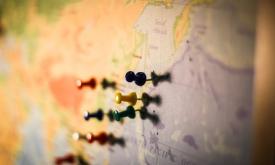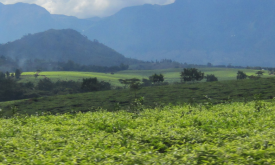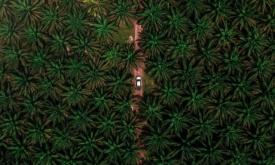STATUS OF DEVELOPMENT OF NATIONAL BIODIVERSITY STRATEGIES AND ACTION PLANS OR EQUIVALENT INSTRUMENTS (NBSAPS) In the ACP group of states (including South Sudan, an observer at ACP), 73 countries have submitted an NBSAP following the adoption of the Strategic Plan for Biodiversity 2011-2020, including the Aichi Biodiversity Targets and 9 countries had submitted an NBSAP prior to the adoption of the Strategic Plan for Biodiversity 2011-2020. [Status at January 2021]
RIS Feed
Geospatial Data - State of NBSAPs publication_2021

Nature-based tourism economy indicator by country
Nature-based tourism economy indicator
This indicator measures sensitivity to pandemic and economic crises affecting international travels and tourism. Nature-based tourism industry is of one of the most important revenue sources for protected areas. the indicator is derived from standardisatoin in a range 0-1 of the Leisure Tourism Spending share of the country GDP (World Tourism and Travel Council), weighted by country naturalness index (Global Competitveness index of the World Economic Forum).
International Park fees
This indicator is based on primary data on average National Park (IUCN category II) fees for international visitors expressed in US dollars calculated at market exchange rates, collected at country level. Reference: Van Zyl et al. 2019 National park entrance fees: a global benchmarking focused on affordability PARKS VOL 25.1 MAY 2019. 10.2305
Number of degraded habitats identified

The Mapping Biodiversity Priorities Initiative for Malawi has assessed the state of a range of ecotypes, taking into account current pressures from agriculture, infrastructure development etc. On this basis, ecotypes were classified according to their remaining area in natural state to the four Red List categories, Least Concern, Vulnerable, Endangered and Critically Endangered. Following this, an assessment was made of the target area for each ecotype that should ideally be protected, and the disparity between actual and desired protection was computed.
Tourism revenue in Protected Areas budget, share
Share of tourism revenue in protecd areas budget. Steven R, Castley JG, Buckley R (2013) Tourism Revenue as a Conservation Tool for Threatened Birds in Protected Areas. PLoS ONE 8(5): e62598. doi:10.1371/journal.pone.0062598
Palm oil plantations-Small holdings

Oil seed crops, especially oil palm, are among the most rapidly expanding agricultural land uses, and their expansion is known to cause significant environmental damage. Accordingly, these crops often feature in public and policy debates, which are hampered or biased by a lack of accurate information on environmental impacts. This dataset presents a global crop map. It covers areas where oil palm plantations were detected at global scale, and includes industrial and smallholder mature oil palm plantations.
---
Mountain ranges
aa
Land cover change 2015-2000
Percentage of land affected by landcover change (ESA LC CCI) within first and last epoch. By protected area.
Restoring opportunities for ecoregions
Nature Needs Half is one of the approaches proposed to identifying actions supporting the post-2020 global biodiversity framework, focusing on protecting, conserving, restoring and retaining natural areas of land and sea. Nature Needs Half call for protection of half of any region.
Progresses towards Nature Needs Half by ecoregions
Nature Needs Half is one of the approaches proposed to identifying transformational actions supporting the post-2020 global biodiversity framework, focusing on protecting, conserving, restoring and retaining natural areas of land and sea. Nature Needs Half call for protection of half of any region.
Paginación
- Página anterior
- Página 7
- Siguiente página